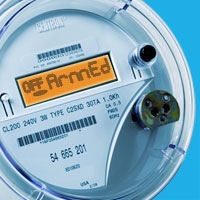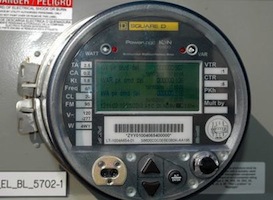Smart Meters


Smart meters are often talked about in solar circles, but what are they?
Smart meter typically describes a meter used by a power, gas or water company to monitor customer usage, in the case where the meter has some functionality beyond simply recording a cumulative total. The most common functions are remote disconnection (under contracted agreement) and remote data capture. To distinguish between smart meters and new time of use electronic meters, the utilities are calling modern time of use meters interval meters. Installing a solar system means getting an interval meter.
Smart Meter Functions
Whilst in NSW Smart meters have only been used in limited trials, the extra functions of sophisticated smart meters may include:
- measuring consumption during different periods, such as for Time-of-use (TOU) billing;
- the capability to measure in two directions, such as bidirectional meters for solar PV systems and Feed-in Tariffs;
- providing a network communications interface for remote probing or data collection;
- providing a local communications interface for proximity interrogation, such as via Bluetooth, infrared, a dock, or cable;
- throttling or remote disconnection, such as in a SMARTgrid, or when the grid is in danger or under pressure;
- multiple languages for display and settings menus; and
- multiple displays or outputs for external displays, such as an SO output for datalogging.
Usually, for Solar PV applications, the one or more modern interval meters are provided by the electricity authority will incorporate options (1), (2) and (4). In larger installations, such as a school, the electricity meter may include the additional options of (3) and (7).
It is important to note that Ausgrid is not rolling out smart meters with remote disconnect, unless you are part of small pool of trial customers. So, with solar you will have an electronic meter, but it won’t be a smart meter with remote disconnection.
What do different types of meters look like ?
Some standard ‘old-school’ ferrari disc meters are illustrated below. Such meters provide a tally of energy use, but no information about when it was used. Often they are called constant tariff meters, or fixed tariff meters. These are common in the Integral/Endeavour and EnergyAustralia/Ausgrid electricity network territories in Sydney.
Whilst in some older installations (Olympic Park, Endeavour/Integral areas) it is common to see disc meters being used to measure solar output, in most areas a digital/electronic interval meter incorporating time-of-use recording will be used. Whilst the meter records when electricity is used, the electricity retailer can still decide to offer a constant rate tariff rather than a time of use tariff.

Bidirectional Interval Meters allow for export of the surplus solar power, whilst maintaining the ability to draw power from the grid when not sunny, such as at night (or any other situation where the household needs to use more power than is coming out of the solar PV system). The exported electricity at this installation site receives a special payment called a Feed-in tariff. The bidirectional meter is used when the feed-in tariff selected is a net feed-in tariff, whilst an independent meter is usually used for gross metering.
Greenforce Energy 2011


